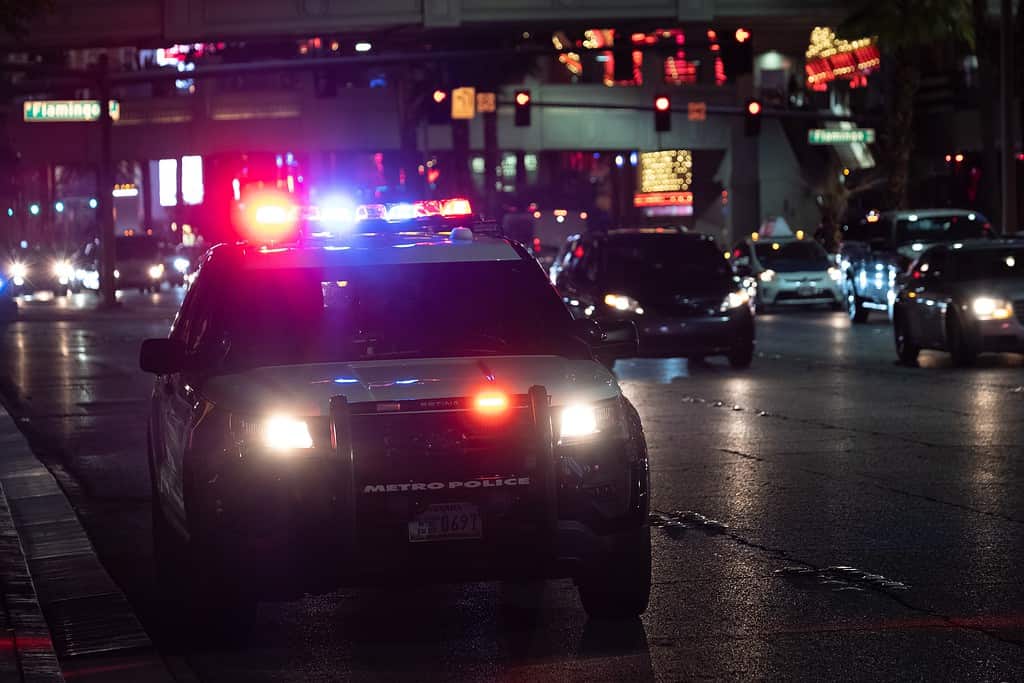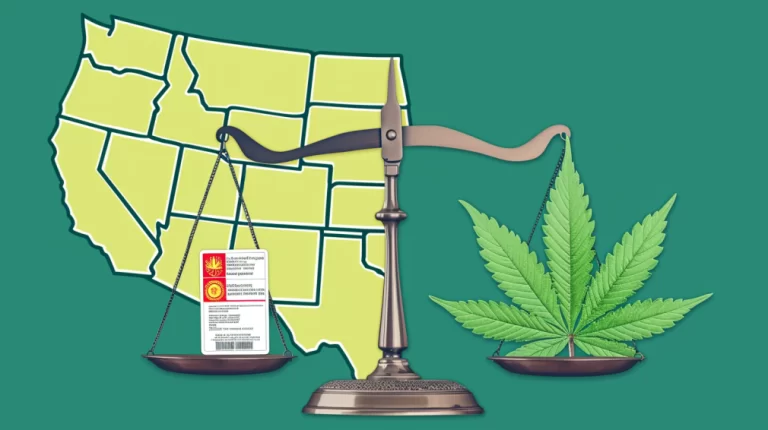Navigating Ohio’s Constitutional Carry Law 2023

Understanding Ohio’s Constitutional Carry Law
You’re stepping into uncharted territory with Ohio’s new constitutional carry law. It’s a symbol of freedom, but with it comes the weight of responsibility.
You’ll navigate this landscape armed with more than just your handgun; knowledge is your true power. In this brief guide, you’ll gain crucial insights into the nuances of carrying without a permit.
Embrace your liberty, but remember that understanding the law is the key to wielding your rights wisely.
Key Takeaways
- Ohio is now a permitless carry or constitutional carry state, meaning gun owners are no longer required to obtain a concealed handgun license (CHL) to have a handgun in their car or on them.
- Permitless carry only applies to handguns, and it is still illegal to carry shotguns, rifles, and other types of long guns without a permit in Ohio.
- There is no legal obligation to disclose that you have a handgun when stopped by the police, but if asked, you must answer truthfully. Failure to inform a police officer after being asked is a first-degree misdemeanor.
- Although not required, CHLs are still available in Ohio. Obtaining a CHL provides safety instruction, training experience, and the ability to carry in other states.
Overview of Constitutional Carry
You must understand that Ohio’s constitutional carry law allows you to possess a handgun without a permit, but it comes with specific eligibility criteria.
If you’re 21 or older, you can legally carry a concealed handgun; however, this right is limited to handguns, and carrying other types of firearms still requires a permit.
Be mindful that while permitless carry offers convenience, you’re still bound by the rules governing firearms within certain areas and circumstances.
Permitless Carry Basics
In Ohio, you’re now able to carry a handgun without obtaining a permit, streamlining your right to bear arms under the state’s constitutional carry law. This means that as long as you meet the legal requirements, you can engage in permitless carry, embodying the essence of constitutional carry. You don’t need to navigate the bureaucratic hurdles previously necessary to exercise your Second Amendment freedoms.
However, it’s crucial to comprehend that while you can carry without a permit, this liberty comes with responsibilities. You must still adhere to all other firearm laws, including not carrying in prohibited zones. Furthermore, while permitless carry underscores your autonomy, it’s wise to stay informed and vigilant regarding the nuances of gun ownership and the potential legal implications of carrying a firearm.
Eligibility Requirements
While Ohio’s constitutional carry law simplifies the process of bearing arms, it’s important to know that several eligibility requirements must still be met before you can legally carry a handgun.
The Ohio Revised Code outlines these prerequisites for the permitless carry law:
- You must be 21 years of age or older.
- You can’t have a felony conviction or certain misdemeanor convictions.
- You mustn’t be under a current protection order.
- You can’t be prohibited by federal law from possessing a firearm.
These points ensure a basic level of accountability and legal compliance.
As you consider the freedoms offered by constitutional carry, remember that eligibility and restrictions go hand in hand. Let’s delve into those details next.
Eligibility and Restrictions

You must be at least 21 years old to carry a handgun in Ohio under the new constitutional carry law.
Your criminal record has a significant bearing on your carrying rights; a felony conviction, for instance, disqualifies you from legal carry.
Understanding these eligibility criteria ensures you’re in compliance and avoids potential legal complications.
Age Requirement Compliance
Meeting Ohio’s constitutional carry law’s age requirement means you must be at least 21 years old to legally possess a handgun without a permit.
To ensure you’re following Ohio law to the letter, be mindful that age requirement compliance isn’t just a suggestion; it’s mandatory for carrying a firearm. If you’re looking to obtain a concealed carry license for reciprocity in other states or for formal training, the same age restriction applies.
- You must be 21 or older for constitutional carry in Ohio.
- The age limit is consistent for permitless carry and obtaining a license.
- Adhering to this requirement is non-negotiable for legal possession.
- Violating the age stipulation can lead to serious legal consequences.
Stay informed and carry responsibly to fully embrace your liberating rights under Ohio law.
Criminal Record Impact
Although your right to carry a handgun in Ohio is now recognized without a permit, it’s important to note that certain criminal records can disqualify you from this privilege. The impact of your criminal record on your eligibility hinges on the nature and severity of past convictions, particularly if you’ve been charged with a gun crime.
| Eligibility Factor | Impact on Concealed Carry Law |
|---|---|
| Felony Convictions | Absolute Disqualification |
| Domestic Violence | Disqualification |
| Drug Offenses | Potential Disqualification |
Analyzing these restrictions reveals a framework designed to balance rights with public safety. If you’re navigating the concealed carry law with a criminal background, you must understand these limitations to ensure you’re within your rights. Next, let’s explore how this law influences the responsibilities and actions of law enforcement.
Impact on Law Enforcement

Ohio’s constitutional carry law necessitates a shift in law enforcement protocols, directly affecting officer safety and daily operations.
You must understand that officers may now approach situations with heightened caution, as the likelihood of encountering armed individuals has increased without the prior requirement of a permit.
Consequently, enforcement strategies will evolve to address these changes, ensuring that public safety and legal compliance remain paramount.
Officer Safety Concerns
While you’re exercising your rights under Ohio’s Constitutional Carry Law, it’s important to consider the impact this legislation has on officer safety and the broader law enforcement community. Law enforcement officers face new challenges with the adoption of this legislation:
- Uncertainty during stops: Officers may be more cautious, knowing any individual could be armed without a permit.
- School safety zone protocols: There’s a need for heightened vigilance to ensure compliance in these sensitive areas.
- Increased training: Departments might require additional training to handle the nuances of constitutional carry during interactions.
- Communication: When stopped by law enforcement, you’re not obliged to volunteer information about carrying a firearm, but if asked, you must respond truthfully, adding a layer of complexity to police encounters.
Enforcement Protocols Change
As you navigate the new landscape of Ohio’s permitless carry law, keep in mind that enforcement protocols for law enforcement officers have also shifted, requiring adjustments in routine traffic stops and other interactions. Law enforcement groups are recalibrating their approach, aligning with the liberties afforded by Ohio’s new permitless carry law.
| Aspect | Before Permitless Carry | After Permitless Carry |
|---|---|---|
| Traffic Stops | Duty to Inform | No Duty, Must Answer if Asked |
| Weapon Verification | License Check | Assess Eligibility without License |
| Officer Training | CHL Focus | Adapt to Permitless Norms |
This analytical shift ensures you’re empowered while officers maintain safety. Now, let’s transition to how these enforcement protocol changes intersect with broader public safety considerations.
Public Safety Considerations
You must consider how Ohio’s constitutional carry law could affect crime rates, as data suggests varying impacts in states with similar legislation.
It’s essential to analyze the challenges law enforcement may encounter, particularly in differentiating legal carriers from potential threats.
This evaluation will help gauge whether the law enhances or undermines public safety.
Crime Rate Impact
Regarding the impact on crime rates, it’s important to understand how Ohio’s constitutional carry law might affect public safety.
The enactment of permitless carry might bring up several concerns:
- Potential fluctuation in crime rates due to increased access to firearms without a permit requirement.
- Shifts in the dynamics of violent encounters, as more individuals may carry firearms for self-defense.
- Changes in illegal firearm trafficking patterns, influenced by the ease of access to handguns.
- Modification of public behavior and perceptions of safety, sparked by the visible presence of more firearms.
Analyzing these factors requires precise and ongoing scrutiny to determine the true crime rate impact of constitutional carry laws.
Now, let’s shift focus to the challenges this law presents for law enforcement.
Law Enforcement Challenges
Ohio’s permitless carry law introduces complex challenges for law enforcement officers tasked with maintaining public safety. You must recognize that without the requirement for a concealed carry license, officers have less immediate insight into who is legally carrying firearms. This shift means relying more on interpersonal skills and acute situational awareness.
| Challenges | Implications |
|---|---|
| No license checks | Increased uncertainty |
| Concealed carry prevalence | Potential risk assessment difficulty |
| Ambiguity in legal obligations | Need for updated training protocols |
The Ohio Attorney General’s guidance is crucial in navigating these changes, ensuring you’re informed and prepared. Your response must be analytical, focusing on risk assessment and preserving the balance between individual rights and community safety. Embrace this evolution in law enforcement with a mindset geared toward liberation, ensuring public safety remains paramount.
Comparing Previous Gun Laws
You must recognize that Ohio’s permit requirements for carrying a concealed weapon have evolved significantly.
Whereas previously, a license was mandatory for concealed carry, you’re now exempt from this stipulation, provided you meet the age and eligibility criteria.
It’s essential to understand the nuances between the old and new regulations to ensure you’re compliant with state law.
Permit Requirements Changed
While you used to need a permit to carry a concealed handgun in Ohio, the new constitutional carry law means that’s no longer the case. With permit requirements changed, you’re now at liberty to exercise your right to bear arms without the previous hurdles.
Here’s what you need to know:
- You’re no longer mandated to obtain a concealed carry license to carry a concealed handgun.
- The option to get a license remains for those who prefer or plan to travel.
Without a permit, ensure you’re aware of areas where concealed carry is restricted. While a license to carry a concealed weapon isn’t necessary in Ohio, it’s wise to stay informed about the laws to maintain your freedom responsibly.
Concealed Carry Differences
Before Ohio’s recent shift to constitutional carry, you’d need a permit to legally conceal a handgun, but now you can carry one without that prior requirement. This pivotal change enhances your autonomy, aligning with the ethos of liberation.
Ohio’s constitutional carry now allows for permitless concealed carry, ensuring you can exercise your Second Amendment rights with fewer governmental constraints.
The concealed carry differences are stark; previously, a permit mandated completing a safety course and background checks. Now, those steps are optional, though still available for those seeking formal training or reciprocity with other states.
It’s critical to recognize that this freedom doesn’t negate the responsibility to adhere to other standing gun laws, including those that govern firearms in specific locations such as schools or private properties.
Frequently Asked Questions
How Does Ohio’s Constitutional Carry Law Interact With Federal Gun-Free Zones, Such as Schools and Post Offices?
You must still obey federal gun-free zone laws, like those for schools and post offices, despite Ohio’s constitutional carry law. Violating these zones can result in serious legal consequences, so stay informed and cautious.
If a Private Property Owner Has a “No Guns Allowed” Sign, What Legal Implications Does This Have for Permitless Carriers in Ohio?
As a wolf respects boundaries, you must heed ‘no guns allowed’ signs on private property in Ohio; ignoring them can lead to trespassing charges, even as a permitless carrier seeking freedom.
How Do Ohio’s Constitutional Carry Laws Affect Non-Residents Visiting the State; Are They Allowed to Carry Without a Permit as Well?
As a non-resident visiting Ohio, you can carry a handgun without a permit, provided you’re legally eligible in your home state and comply with Ohio’s laws on firearms and public safety.
What Are the Legal Consequences for Someone From Ohio Who Carries a Concealed Handgun Into a State That Does Not Have Constitutional Carry and Does Not Recognize Ohio’s Permitless Carry?
If you carry a concealed handgun into a non-reciprocal state, you’re risking arrest and prosecution for weapons violations, just as if you’d wandered into a bear’s den with steak in your pockets. Stay informed.
Are There Any Specific Training or Education Resources Recommended by the State of Ohio for New Gun Owners Who Are Taking Advantage of the Constitutional Carry Law but Are Inexperienced With Firearms?
You should seek out Ohio’s state-recommended training resources, even as a new gun owner under constitutional carry, to ensure safe and responsible firearm handling. These programs provide essential education and skill development.
Conclusion
You’ve now scaled the mountain of Ohio’s constitutional carry law, standing at the summit with a clear view of your rights and limits. Remember, while you can carry your handgun as freely as the wind, this liberty comes with a weighty responsibility.
You’re the guardian of your own safety and others’, so tread carefully. As you navigate this new terrain, keep your knowledge sharp and your judgment sharper.
Carry with wisdom, Ohioans, for the power is truly in your hands.







One Comment
Comments are closed.